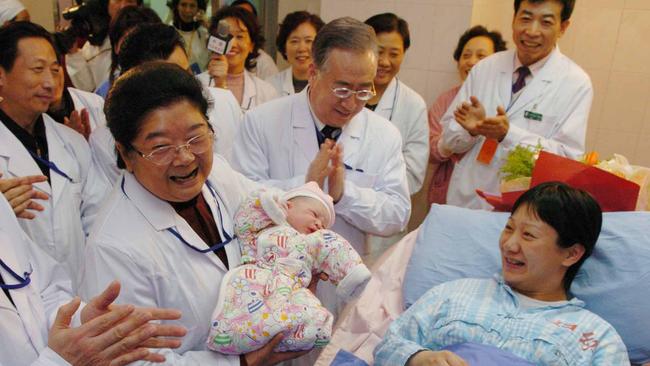Time running out for China’s stalled birth rate crisis
The growing reluctance of young people across China to have babies is exacerbating a demographic crunch emerging as one of the biggest long-term challenges facing the country’s ruling party.

The growing reluctance of young people across China to have babies is exacerbating a demographic crunch emerging as one of the biggest long-term challenges facing the country’s ruling party.
Over the past decade under President Xi Jinping, the population increased by only 53.38 million at an average annual growth of 0.4 per cent. At some point in the next five years – possibly as soon as this year – it is forecast to start shrinking.
The shift is seen as both a symbolic and practical blow to Mr Xi’s dominance, and the crisis is casting an increasingly long shadow over the third term he is expected to be awarded this week at the Chinese Communist Party’s national congress.
In his speech on Sunday to 2300 delegates packed into the Great Hall of the People in Beijing, Mr Xi promised to tackle the stalled birth rate. “We must establish a policy system to support births, and we must implement a national strategy to actively cope with ageing,” he said, using language notably stronger than the congress five years ago.
The current population of 1.4 billion is, by a narrow margin, the largest in the world. But research from the Shanghai Academy of Social Sciences has predicted that it will drop to 587 million by 2100, less than half of what it is today.
The marriage rate has fallen for eight straight years since reaching a peak in 2013 (nearly 13.4 million couples registered for marriage nine years ago, but only 7.6 million last year).
Births fell to a record low in 2021 with only 10.62 million babies. That is expected to fall below 10 million this year.
Between 1980 and 2016 China imposed a one-child policy to curb population growth. Its removal six years ago represented official recognition China was facing a demographic downturn.
In 2012, the country had 14.57 births per 1000 people, the highest since 2000. But last year there were only 7.52 births per 1000 people, the lowest since 1949, when the Communist Party founded the People’s Republic of China. The overall fertility rate (births per woman) dropped to 1.15 in 2021, down from 2.6 in the late 1980s. A rate of 2.1 is required to keep up with deaths.
At the same time, the country is getting greyer. In 2021 more than 267 million Chinese people were 60 or older, nearly one fifth of the population, compared with 263 million children aged up to 15.
Demographers are pessimistic that new policies can drive more births, because the primary reason for the country’s declining fertility rate is the decrease in the number of women of child-bearing age.
There were 166 million Chinese women between 20 and 34 in 2000. By 2020 there were only 146 million. The number of women 15-49 then fell by five million between 2020 and 2021, data shows.
Mr Xi’s fierce zero-Covid policies have further complicated efforts. Chinese women are now less inclined to have children than any other women in the world, according to a survey in February by the YuWa Population Research think tank.
The Times



To join the conversation, please log in. Don't have an account? Register
Join the conversation, you are commenting as Logout